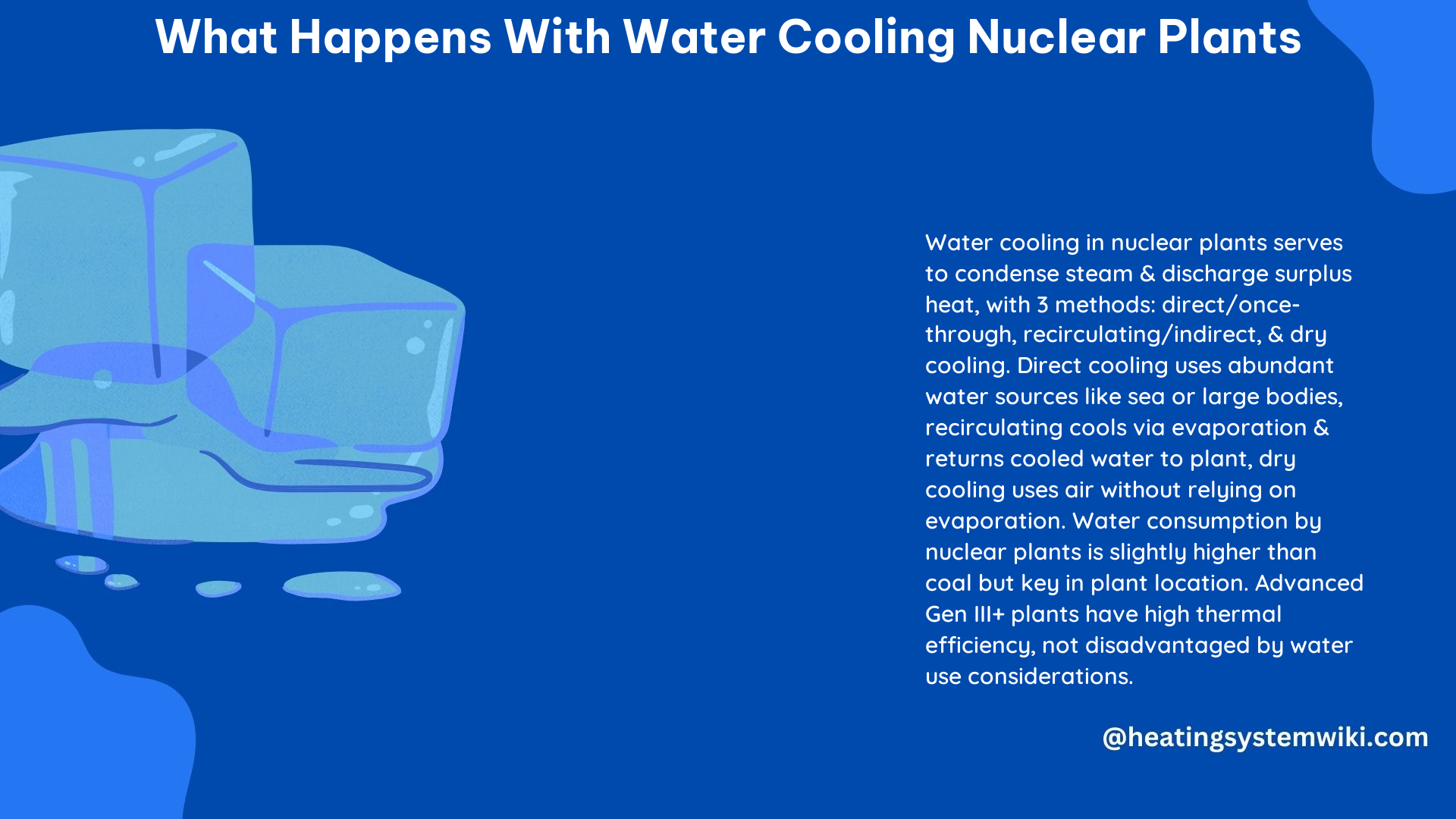Water cooling is a crucial aspect of nuclear plant operations, as it helps to remove heat from the reactor core and prevent overheating. In water-cooled reactors, water is circulated through the reactor core, where it absorbs heat from the fuel rods. The heated water is then pumped to a heat exchanger, where it transfers its heat to a secondary water system that produces steam to drive the turbine generators.
Types of Water-Cooled Reactors
There are two main types of water-cooled reactors: Pressurized Water Reactors (PWRs) and Boiling Water Reactors (BWRs).
Pressurized Water Reactors (PWRs)
In PWRs, the water that cools the reactor core is kept under high pressure, typically around 15.5 MPa (2,250 psi), to prevent it from boiling. Instead, the heated water is circulated through tubes in a heat exchanger, where it transfers its heat to a secondary water system that produces steam. This steam is then used to drive the turbine generators.
Key Specifications of PWRs:
– Reactor Coolant Pressure: 15.5 MPa (2,250 psi)
– Reactor Coolant Temperature: 290-330°C (554-626°F)
– Steam Generator Pressure: 6.9 MPa (1,000 psi)
– Steam Generator Temperature: 275-310°C (527-590°F)
Boiling Water Reactors (BWRs)
In BWRs, the water that cools the reactor core is allowed to boil, and the resulting steam is used directly to drive the turbine generators. This eliminates the need for a secondary water system and a heat exchanger, simplifying the overall plant design.
Key Specifications of BWRs:
– Reactor Coolant Pressure: 7.2 MPa (1,050 psi)
– Reactor Coolant Temperature: 285-302°C (545-576°F)
– Steam Pressure: 6.8 MPa (985 psi)
– Steam Temperature: 285-302°C (545-576°F)
Importance of Water Cooling

Water cooling is essential for the safe and efficient operation of nuclear plants. If the cooling water is not properly managed, it can lead to overheating of the reactor core, which can result in a meltdown. In the worst-case scenario, a meltdown can release radioactive materials into the environment, posing a significant risk to public health and the environment.
To prevent such accidents, nuclear plants have multiple layers of safety systems in place, including:
- Emergency Cooling Systems: These systems can be activated in case of a loss of coolant accident, ensuring that the reactor core remains adequately cooled.
- Containment Structures: These structures are designed to prevent the release of radioactive materials in the event of an accident.
Challenges Posed by Climate Change
In recent years, there has been a growing concern about the impact of climate change on the availability of water for cooling nuclear plants. Many nuclear plants use freshwater for cooling, and climate change can lead to a decrease in the availability of freshwater in some regions. This can increase the risk of coolant system failures and accidents.
To address this challenge, some nuclear plants are exploring the use of alternative cooling systems, such as:
- Air-Cooled Condensers: These systems use air instead of water to condense the steam from the turbine generators, reducing the reliance on freshwater.
- Dry Cooling Towers: These towers use air to cool the water, eliminating the need for a direct water source.
These alternative cooling systems can help to reduce the risk of coolant system failures and accidents, making nuclear plants more resilient to the effects of climate change.
Conclusion
Water cooling is a critical aspect of nuclear plant operations, and it is essential for the safe and efficient operation of these plants. While water-cooled reactors have played a significant role in the commercial nuclear industry since its beginnings, climate change and water scarcity pose new challenges to the safe operation of these plants. To address these challenges, nuclear plants are exploring the use of alternative cooling systems and implementing multiple layers of safety systems to prevent accidents.
Reference:
– Water cooled reactors | IAEA
– What happens to a nuclear plant when you stop cooling it
– Nuclear Reactors Don’t Need to Be So Thirsty
